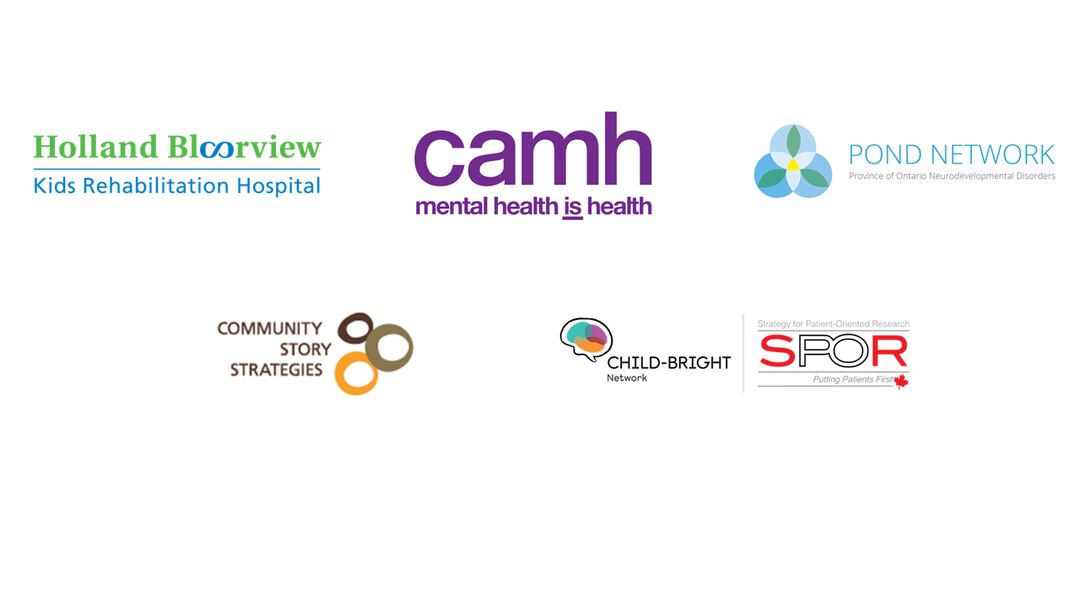In this project, youth with neurodevelopmental disorders* combined art, photos and their voices to tell stories about their experiences when it comes to their mental health. Through digital stories, they highlighted both challenges and triumphs about mental health, gaps in the healthcare system, and provided tips on how care providers should talk to them about their mental health. Youth said that they hoped care providers would use the tips from their digital stories to provide meaningful support to youth in times of need. Scroll down to see the 9 videos and to read about the film-makers and their films “In their own words”.
*Throughout the webpage, we use the term neurodevelopmental disorders as this was the terminology used by youth and families in prior work with the POND network. We recognize that there is a diversity of perspectives and preferences regarding language use about disability. We recognize that language is fluid, ever-changing, and recognize the need to revise language on an on-going basis.
Watch the videos
Content warning: the following videos contain potentially triggering language around mental illness, including a mention of suicidal thoughts and behaviours. If you are experiencing thoughts of suicide, you are deserving of help and can call 1-833-456-4566. If you feel safe in the moment, follow up with your family physician or care team. If you require immediate, in-person emergency care, call 911, or go to your nearest emergency department.
Harm And Healing
Medical professionals need to understand that what you say to patients can stick to them forever.
My Journey In The Healthcare System
We all deserve to be treated with compassion, respect and to be included in conversations influencing our health.
The Night Before The Final Exam
Dr. Heartstein learned that Wormy enjoyed drawing. He shared his own drawing with Wormy and said that drawing helps him stay calm.
A Long Way
She never rushes me and really listens to me and she doesn’t talk to me like I’m a little kid. This makes me feel important and wanted.
Digital Story... OK Cool.
He didn’t assume that I couldn’t understand. He actually saw me as a person, not just a diagnosis.
Fighting My Inner Battles
I didn’t need glasses. I just needed to see it in a different way.
My Truth: The Difficult Climb
You only cry for help if you believe there’s help to cry for.
The following video contains potentially triggering language around mental illness, including a mention of suicidal thoughts and behaviours. If you are experiencing thoughts of suicide, you are deserving of help and can call 1-833-456-4566. If you feel safe in the moment, follow up with your family physician or care team. If you require immediate, in-person emergency care, call 911, or go to your nearest emergency department.
Just Breathe
The psychologist was helpful because she spoke to me in an easy language that I could understand.
Feeling Unhinged
The idea that Matthew should forgive and forget was too abstract for him. What helped him most was clear, direct and concise language.
About the project
What is digital storytelling?
Digital storytelling is an arts-based process which combines photos, videos, audio, and the participant voices to tell a story. Digital storytelling initially was used to amplify the voices of people who were marginalized in society. Digital storytelling is now also used as a method to conduct research about people’s experiences, and as a tool to share this knowledge with the world.
What are neurodevelopmental disorders?
Neurodevelopmental disorders, such as autism spectrum disorder (ASD), attention deficit hyperactivity disorder (ADHD), intellectual disability (ID), obsessive compulsive disorder (OCD), tic disorders, learning disabilities, speech and language disorders, developmental coordination disorder, and related rare genetic syndromes, are a group of conditions which start early in life and may impact personal, social, academic.
Mental health challenges in youth with neurodevelopmental disorders:
Research suggests that youth with neurodevelopmental disorders experience higher rates of mental health challenges such as anxiety and depression compared to their peers without disorders. Youth with neurodevelopmental disorders also tend to have higher rates of visits to hospital emergency room for mental health care. Yet, youth experience many barriers receiving timely and appropriate mental health care. There also is a lack of knowledge and training among healthcare and education and social services professionals on how they should initiate and foster conversations about mental health among youth with neurodevelopmental disorders.
About the contributors
The project was conducted by the youth council at The POND network, the Centre for Addiction and Mental Health (CAMH) and Holland Bloorview Kids Rehabilitation Hospital (HB). The perspectives of Mental Health Project Among Youth with Neurodevelopmental Disorders is supported by the CHILD-BRIGHT Network, Under Canada’s Strategies for Patient-Oriented Research (SPOR) initiative. This project also received support from the Ontario Brain Institute.
CAMH: The project was led by Dr. Patrick Jachyra and Dr. Yona Lunsky at the Centre for Addiction and Mental Health. Website content was developed with support from Adeen Fogle.
HB: The project was co-produced with members of the Province of Ontario Neurodevelopmental Disorders Network (POND), led by Dr. Evdokia Anagnostou at HB, its Youth Council (Noah Barnett, Austin Cosgrove, Sheldon Gaboury), and the POND parent program advisory council (Cathy Gaboury, Claudine Evangelista).
Digital storytelling company: The Digital Stories were created in partnership with Community Storytelling Strategies.

